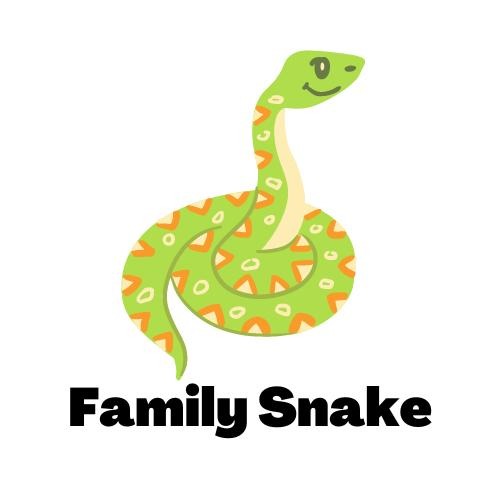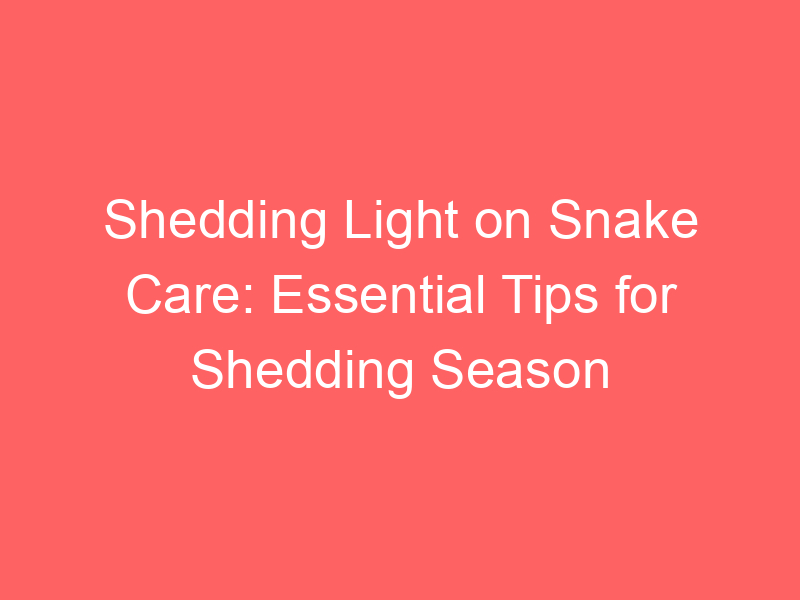Introduction to Snake Enclosure Substrate
When it comes to creating a comfortable and healthy environment for your pet snake, one of the most important aspects to consider is the substrate. The substrate, or the material that lines the bottom of the snake’s enclosure, plays a vital role in your snake’s overall well-being. Let’s delve into the importance of choosing the right substrate and its role in a snake’s habitat.
- Importance of choosing the right substrate
- Role of substrate in a snake’s habitat
Choosing the right substrate for your snake’s enclosure is more than just a matter of aesthetics. It’s about creating a habitat that closely mimics your snake’s natural environment. The right substrate can help regulate humidity levels, provide comfort, and even aid in your snake’s digestion process. For instance, certain substrates can help snakes with shedding by providing the necessary moisture. On the other hand, the wrong substrate can lead to health issues such as respiratory problems or skin infections.
The substrate is a key element in a snake’s habitat. It serves as the floor of their home, where they slither, rest, and sometimes burrow. It also plays a role in maintaining the right temperature and humidity levels inside the enclosure. In the wild, snakes live in a variety of substrates, from sandy deserts to leafy forests. Therefore, the substrate in their enclosure should mimic their natural habitat as closely as possible. This not only makes the snake feel more at home, but it also contributes to their physical health and psychological well-being.
As we delve deeper into the topic of snake enclosure substrates, we’ll discuss how to select the best substrate for your snake, how to set it up, and how to maintain it. We’ll also share some case studies to help you make an informed decision. Remember, the goal is to create the perfect home for your snake, and the substrate is a crucial part of that home.
Understanding Snake Habitat Substrate Selection
Choosing the right substrate for your snake’s habitat is a crucial part of ensuring their health and happiness. The substrate, or the material that lines the bottom of your snake’s enclosure, plays a significant role in their overall wellbeing. It can affect everything from their skin health to their ability to regulate their body temperature. Therefore, it’s essential to understand how to select the right substrate for your snake’s specific needs.
Factors to Consider When Choosing Substrate for Snakes
When it comes to selecting the right substrate for your snake, there are several key factors to consider. Here are some of the most important:
- Snake species: Different snake species have different substrate needs. For example, a desert-dwelling snake like the Rosy Boa will need a different substrate than a tropical snake like the Ball Python. It’s crucial to research your specific snake species to understand their natural habitat and substrate preferences.
- Humidity requirements: The substrate can play a big role in maintaining the right humidity levels in your snake’s enclosure. Some substrates, like coconut fiber, are excellent at retaining moisture and can help create a humid environment. Others, like aspen shavings, are better for drier habitats.
- Cleaning and maintenance: Some substrates are easier to clean and maintain than others. For example, paper towels or newspaper are easy to replace, but they don’t offer much in terms of aesthetics or natural behavior encouragement. On the other hand, substrates like bark or wood chips can be more difficult to clean but offer a more natural-looking environment for your snake.
By considering these factors, you can make an informed decision about the best substrate for your snake’s habitat. Remember, the goal is to mimic your snake’s natural environment as closely as possible to ensure they can thrive.
Best Substrate for Snake Enclosures
Choosing the right substrate for your snake enclosure is crucial. It can greatly influence the health and happiness of your pet snake. Let’s explore some of the best substrates you can use for your snake enclosure.
Substrate Types for Snakes
There are several types of substrates that you can use for your snake enclosure. Each has its own set of benefits and drawbacks. Here are some of the most commonly used substrates:
- Aspen Shavings: Aspen shavings are a popular choice for many snake owners. They are soft, absorbent, and easy to clean. Plus, they don’t give off any harmful dust or fumes. However, they can dry out quickly, so they may not be the best choice for snakes that need a high humidity environment.
- Cypress Mulch: Cypress mulch is another good option. It retains moisture well, making it a great choice for snakes that need a humid environment. However, it can be a bit messy and may need to be replaced more often than other substrates.
- Coconut Fiber: Coconut fiber is a natural, eco-friendly substrate that’s great for burrowing snakes. It retains moisture well and is easy to clean. However, it can be a bit dusty, so it’s not the best choice for snakes with respiratory issues.
- Reptile Carpet: Reptile carpet is a reusable substrate that’s easy to clean and doesn’t give off any dust or fumes. However, it doesn’t retain moisture well, so it’s not the best choice for snakes that need a humid environment.
Remember, the best substrate for your snake will depend on its specific needs and preferences. Always research your snake’s natural habitat and try to mimic it as closely as possible in their enclosure.
Snake Enclosure Setup: Substrate Guide
Creating a comfortable and natural environment for your snake is essential for its health and happiness. One of the key elements in this setup is the substrate, which forms the base of your snake’s enclosure. This guide will walk you through the process of installing substrate in your snake enclosure.
How to Install Substrate in Snake Enclosures
Setting up the substrate in your snake enclosure involves three main steps: preparing the enclosure, applying the substrate, and adding additional elements like hides and water bowls. Let’s take a closer look at each of these steps.
- Preparing the Enclosure
- Applying the Substrate
- Adding Additional Elements like Hides and Water Bowls
Before you add the substrate, ensure the enclosure is clean and dry. Remove any old substrate and clean the enclosure with a reptile-safe disinfectant. Allow it to dry thoroughly before proceeding to the next step.
Choose a substrate suitable for your snake species. Pour the substrate into the enclosure, ensuring it covers the base evenly. The depth of the substrate will depend on the snake species, but a general rule is to have a layer thick enough for your snake to burrow if it wishes to.
Once the substrate is in place, you can add other elements to make the enclosure more comfortable and natural for your snake. These can include hides, which provide a place for your snake to retreat and feel safe, and a water bowl for hydration. Place these elements on top of the substrate and ensure they are stable.
Remember, the goal is to create an environment that mimics your snake’s natural habitat as closely as possible. This will help your snake feel at home and promote its overall well-being.
With the right substrate and setup, your snake enclosure can become a thriving environment for your pet. Always research the specific needs of your snake species to ensure you are providing the best care possible.
Substrate for Reptile Enclosures: Case Studies
Let’s explore some real-life examples to better understand the importance of choosing the right substrate for your reptile’s enclosure. Our first case study focuses on a popular pet snake, the Ball Python.
Case Study 1: Ball Python Enclosure
The Ball Python, a non-venomous constrictor native to Africa, is a popular choice among reptile enthusiasts due to its docile nature and manageable size. In this case study, we will examine the substrate choice for a Ball Python enclosure and the reasons behind it.
- Substrate choice: Cypress mulch
- Reasons for choice and results:
Cypress mulch was chosen as the substrate for the Ball Python enclosure. This choice was made due to several factors that make cypress mulch an excellent substrate for this species.
Cypress mulch is known for its ability to retain moisture, which is crucial for creating a humid environment that Ball Pythons thrive in. It also helps in regulating the temperature inside the enclosure, providing a comfortable living space for the snake.
Moreover, cypress mulch is soft and doesn’t have sharp edges, reducing the risk of the snake getting injured. It is also resistant to mold, making it a hygienic choice. The Ball Python in this case study showed positive signs of health and comfort, indicating that the choice of cypress mulch was indeed a good one.
In conclusion, the choice of substrate plays a significant role in the health and well-being of a reptile. By understanding the specific needs of the species, we can make informed decisions that contribute to their overall quality of life.
Case Study 2: Corn Snake Enclosure
Let’s now delve into our second case study, focusing on the Corn Snake enclosure. In this scenario, the chosen substrate was Aspen shavings.
- Substrate choice: Aspen shavings
- Reasons for choice and results
Aspen shavings are a popular choice for Corn Snake enclosures. This substrate is not only affordable but also highly absorbent and easy to clean. It is light in color, allowing for easy detection of waste and uneaten food. Moreover, Aspen shavings do not contain harmful oils or chemicals that could harm your snake.
The choice of Aspen shavings was primarily due to its excellent absorbency and ease of maintenance. Corn Snakes, like many other reptiles, require a clean environment to thrive. Aspen shavings make it easy to spot clean the enclosure, reducing the risk of bacterial and fungal infections.
Furthermore, Aspen shavings are soft and comfortable for the snake, providing a natural and cozy environment. They also allow the Corn Snake to burrow, which is a natural behavior for this species.
The results were quite positive. The Corn Snake seemed comfortable and healthy in its Aspen-shavings-filled enclosure. There was a noticeable decrease in the occurrence of health issues, and the snake was more active and exhibited natural behaviors.
In conclusion, Aspen shavings proved to be an excellent substrate choice for the Corn Snake enclosure. They provided a clean, comfortable, and natural environment for the snake, contributing to its overall health and well-being.
| Substrate Choice | Reasons for Choice | Results |
|---|---|---|
| Aspen Shavings | High absorbency, easy maintenance, allows natural behaviors | Healthy, active snake exhibiting natural behaviors |
Snake Care Substrate Selection: Key Takeaways
As we delve into the world of snake care, it’s important to remember that every detail matters, especially when it comes to the substrate selection for your snake’s enclosure. Here are the key takeaways from our discussion:
- Importance of Species-Specific Substrate
- Role of Substrate in Humidity Control
- Impact of Substrate on Snake Health
Every snake species has unique needs and preferences. The substrate you choose should mimic their natural habitat as closely as possible. For instance, a Ball Python, native to Africa, thrives on a substrate that can hold moisture without getting soggy, like coconut fiber or cypress mulch. On the other hand, a Corn Snake, native to North America, prefers a dry substrate like aspen shavings. Understanding the specific needs of your snake species is crucial in selecting the right substrate.
Substrate plays a significant role in maintaining the right humidity levels in your snake’s enclosure. Some substrates, like sphagnum moss and coconut fiber, are excellent at retaining moisture and can help maintain high humidity levels. Others, like aspen shavings, are better for enclosures that require lower humidity. It’s essential to monitor humidity levels regularly and adjust the substrate type as needed to ensure your snake’s comfort and health.
The substrate doesn’t just affect your snake’s comfort—it can also have a direct impact on their health. A wrong substrate can lead to issues like scale rot, respiratory infections, and even stress. For example, cedar and pine shavings should be avoided as they contain oils that can harm your snake. Always choose a substrate that is safe and suitable for your specific snake species.
In conclusion, the substrate is more than just a bedding for your snake. It’s a crucial part of their habitat that can significantly impact their health and well-being. Always remember to consider your snake’s specific needs, the role of substrate in humidity control, and the potential impact on their health when making your substrate selection.
Snake Enclosure Design Techniques: Substrate and Beyond
Designing a snake enclosure goes beyond just choosing the right substrate. It’s about creating a home that mimics the snake’s natural habitat as closely as possible. Here are some techniques to help you create a naturalistic enclosure, enhance aesthetics using substrate, and other design elements to consider.
- Creating a Naturalistic Enclosure
- Using Substrate to Enhance Enclosure Aesthetics
- Additional Design Elements to Consider
Creating a naturalistic enclosure is about more than just aesthetics; it’s about providing your snake with an environment that closely mimics its natural habitat. This includes the right temperature, humidity, and lighting conditions. For instance, if you have a desert snake, you’d want to use a sandy substrate and provide plenty of warm, dry areas. On the other hand, a rainforest snake would need a moist substrate and plenty of hiding spots among plants.
Substrate isn’t just functional; it can also be used to enhance the aesthetics of your snake enclosure. For example, a brightly colored substrate can make your snake’s colors pop, while a more natural-looking substrate can give the enclosure a more authentic feel. Remember, the substrate you choose should be safe for your snake and easy to clean.
There are many other design elements to consider when setting up your snake enclosure. These include hiding spots, climbing branches, water dishes, and decorations. Hiding spots are essential for your snake’s sense of security, while climbing branches can provide much-needed exercise. Water dishes should be large enough for your snake to soak in, and decorations can add visual interest to the enclosure.
In conclusion, designing a snake enclosure is a complex task that requires careful consideration of many different factors. By creating a naturalistic environment, using substrate to enhance aesthetics, and considering additional design elements, you can create a home your snake will love.
Conclusion: Creating the Perfect Home for Your Snake
As we conclude this comprehensive guide, let’s revisit the key points and wrap up our discussion on creating the perfect home for your snake. Remember, the comfort and health of your snake largely depend on the environment you create for it.
- Recap of the importance of substrate selection
- Final thoughts on snake enclosure design
The substrate is not just the floor of your snake’s home; it’s a crucial aspect of their habitat that can significantly impact their health and well-being. The right substrate can help maintain the appropriate humidity levels, provide comfort, and even assist in the shedding process. From the various options we discussed, such as aspen shavings, cypress mulch, and coconut fiber, it’s clear that each substrate has its unique benefits and drawbacks. The key is to understand your snake’s specific needs and select a substrate that best meets those needs.
Designing a snake enclosure is more than just about aesthetics. It’s about creating a space that mimics your snake’s natural habitat as closely as possible. This includes not only the substrate but also the temperature, humidity, lighting, and the inclusion of hide spots and climbing structures. Remember, a well-designed enclosure can make your snake feel secure, stimulate their natural behaviors, and ultimately contribute to their overall health and longevity.
In conclusion, creating the perfect home for your snake requires careful consideration and planning. It’s not just about providing a space for your snake to live, but creating an environment where they can thrive. With the right substrate and a well-designed enclosure, you can ensure your snake leads a healthy, happy life.







